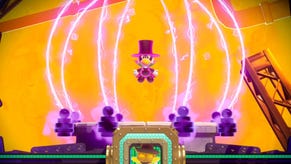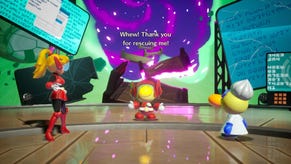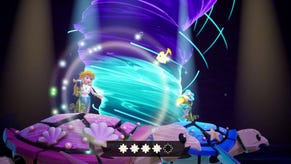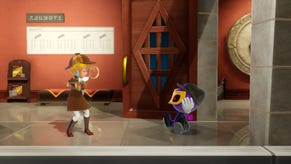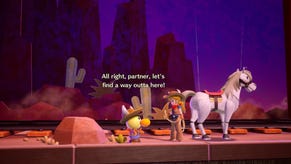Princess Peach Showtime is obviously for Nintendo's younger players, but it’s still delightful – hands-on
Princess Peach is the star of the show in this lovely kid-friendly adventure - but there’s more to it than first meets the eye.
It’s pretty crazy to think how in the four decades of the Mario series, Peach has only ever been a central playable character on a handful of occasions. In most cases, even when playable, she’s been part of an ensemble, like in party games, Mario 2 USA, or Mario RPG. But in Princess Peach showtime, she takes center stage - literally.
Something of Peach’s showtime adventure calls to mind Yoshi’s Story on N64, in fact. That game had a storybook aesthetic, with the game’s narrative framed as a bedtime story told to restless Yoshis. Showtime’s core conceit is that everything that takes place does so within a theater – as part of a series of plays, something that lives up to an age-old Miyamoto philosophy.
Each ‘level’ the game offers is a different show, which leaves Peach able to change into a variety of costumes and take on a variety of different abilities. This is basically a game about role-play, in the traditional non-gaming sense.
The theater-bound nature of the narrative gives the story a cozy, friendly atmosphere. Stage details are frequently made out of what is visibly flat cardboard - because it’s not meant to be real. Everything has a light touch of artifice that adds to the fun and dials down the peril.
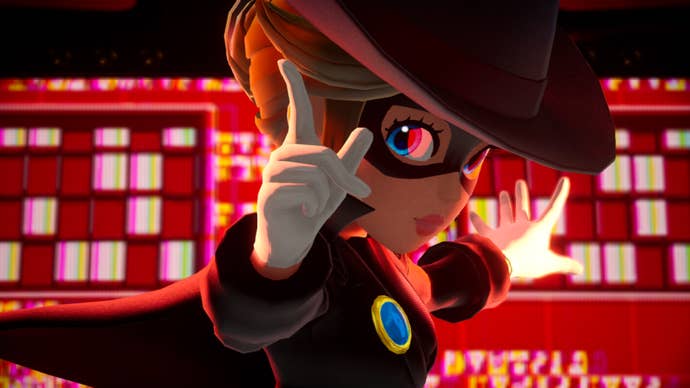
The story is as bare bones as you’d expect: Peach goes to the theater to watch a show, but instead events are interrupted by a villainous Rayman-type armless witch type called Grape. Her minions, ‘The Sour Bunch’, are indeed all vaguely grape-like. They take over the theater and relentlessly bully its proprietors, the Theets. These are new characters, and during the hands-on the story is focused on all-new additions to the Mario canon. Baggage, even of the Toady variety, is left at the theater door.
The theater is functionally a bit like the heroine’s castle from Mario 64 - a series of lobbies with doorways to stages, or worlds. Each stage has ten things to collect inside in a lost, Mario Odyssey-style ‘grab what you can’ way. Complete each stage on a given floor in whatever order you like by noodling through to a boss-like encounter that isn’t always combat focused and you’ll complete the stages. Finishing every stage on a floor lets you advance to the next bit of the theater, where more stages await. You can go back into completed stages to nab things you missed, too.
What lies within each stage is where Showtime offers its true selling point - completely different gameplay modes for each level. Peach isn’t just changing costume - she changes everything.
.jpg?width=690&quality=70&format=jpg&auto=webp)
When you first enter each stage, Peach will be herself. She has some sparkly magic that can defeat basic enemies and revive depressed Theets - but really what each level requires is that you find the costume for that stage. At this point Peach cutely changes outfit - but also gains new abilities unique to that stage.
I’m told that internally Nintendo calls this sort of thing a ‘Charm Point’ - an element of a game that stands out, pleases, and allures. If we’re being less charitable, we could call it a gimmick. But gimmicks can be great. This is one such case.
In this demo, I got to try out four different gameplay modes. As a Swordfighter, the game offers an enticing pitch: what about Baby’s First Bayonetta? You can just swing your sword, but encounters and particularly the boss are built around dodging and counter-attacking, with generous windows for players less used to twitch play. I feel like younger players could discover a whole new genre this way. Baker Peach meanwhile has a stage that’s basically combat-free, instead made up of cake-decorating mini games that feel a bit like they fell out of Mario Party.
.jpg?width=690&quality=70&format=jpg&auto=webp)
Ninja Peach isn’t built around full-on Hayabusa action, but instead a simple stealth mechanic. Peach can blend into the papery grass of the level to hide herself. When an enemy turns their back, you can dash in for a backstab. Cowgirl Peach doesn’t get a gun - this isn't Fortnite - but instead Lassos enemies, able to scoop them up and then toss enemies or objects at things with the rope.
As well as the core mechanic, the game isn’t afraid to have a little cinematic flair either. Cowgirl Peach’s stage culminates in a sequence that moves the lasso mechanic to an on-rails horseback chase, while the Swordfighter features a proper boss fight.
It’s all quite fluffy, but it overwhelms with charm. The costumes, the animations - the way Ninja Peach holds up a little bit of hand-drawn shrubbery on a bit of paper to cover her head when sneaking through tall grass - it’s just lovely. It’s also clearly not for a thirty-something man, in fairness - but I look at this and I see the sort of thing that absolutely could be my daughter’s very first video game. She’s a bit young yet - but seeing Nintendo make games like this has me excited for the future - and jealous of those already able to share gaming with their little ones. It’s true that in this build the frame rate was rough and the load times are long - but I also have to ask myself - does the target audience of a game like this really care that much about that stuff?
.jpg?width=690&quality=70&format=jpg&auto=webp)
As always with a game like this, much will ultimately ride on the breadth of content. I saw four stages and costumes - a handful of those in the final game. But if everything else in the game is on par with what I saw, and if Nintendo can smooth out the performance a bit, I can see this being a huge success, and a great game for younger kids. The fact it comes in a package that finally gives Peach her dues is the icing on the cake.
Princess Peach Showtime comes to Nintendo Switch on March 22.




